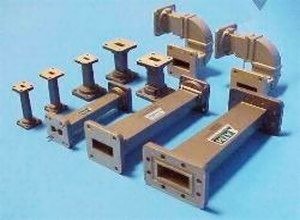Are you calling helical hardline "wave guide" ? Waveguide is rectangular, has launcher modules to transition from coax to waveguide, and is extremely low loss. Usually thick, precision milled resonant cavity and thick, stiff, inflexible walls, with coupling flanges brazed or welded on, and then the whole works silver or gold plated. It would be a crime to flatten it.
Just wanting to talk the same terms here. http://www.atmmicrowave.com/waveguide/
hardline:
Waveguide:
Just wanting to talk the same terms here. http://www.atmmicrowave.com/waveguide/
hardline:

Waveguide:

Comment